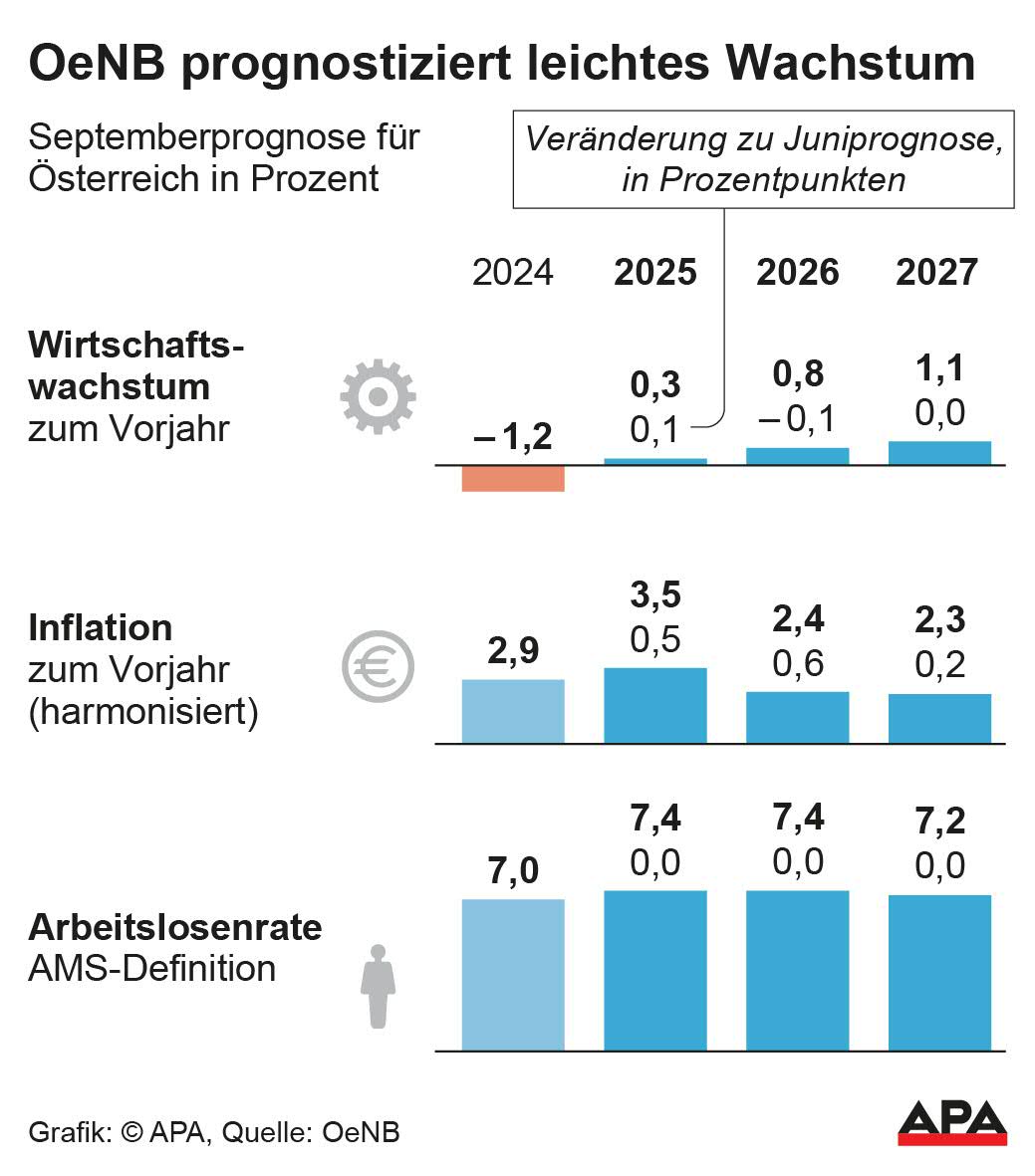OeNB Forecast: Slight Economic Growth This Year

At the end of June, Wifo and IHS forecasted stagnation of the Austrian economy for 2025 with 0.0 percent growth or a slight increase of 0.1 percent. This is an improvement over the March forecast, which had predicted a decline (Wifo: -0.3 percent, IHS: -0.2 percent). According to the current forecasts, Austria thus avoids a third year of recession.
Uncertainty in OeNB Forecast Due to Trump's Tariffs
"We continue to see subdued growth prospects," said Governor Martin Kocher on Friday at a press conference. Inflation also remains stubbornly high. The slight adjustment of the forecast for 2025 is justified by the National Bank with the relatively good economic development in the first half of the year. There were "advance effects" due to the US tariffs, Kocher explained. However, geopolitical developments - especially the turmoil surrounding President Donald Trump's US tariffs - continue to create uncertainties or downside risks this year. Kocher: "We have an environment as uncertain as it has been for a long time." However, there are also potentials through higher consumption, provided the very high savings rate in this country decreases.

Austria has left behind the longest recession in post-war history, added Gerhard Fenz, head of the Economic Department at the National Bank. Economic output fell by almost 3 percentage points between the fourth quarter of 2022 and the third quarter of 2024. A significant part of this was due to the "pronounced industrial recession," which accounted for almost 50 percent of the decline. An important factor was also the propensity to save and the associated weakness in consumption in recent years - and this despite the fact that household incomes have recently "not developed so badly."
OeNB Expects Increase in Annual Inflation
Inflation is likely to develop worse. For this year, the National Bank economists expect an increase in the Harmonized Consumer Price Index (HCPI) to 3.5 percent, which is 0.6 percentage points more than in 2024 (2.9 percent). A major driver for the resurgence of inflation is the significantly increased energy prices at the beginning of the year, especially in the area of household energy. But also the price increases in the service sector and for food prices have a negative impact on the development.
After all, indexations - that is, the linking of prices to the inflation development of the previous year, as is the case with rents or insurance services - currently have no major impact on inflation, explained Doris Prammer from the economic department of the National Bank. Although the effects on inflation would increase significantly in the short term if wages, which are de facto indexed through collective bargaining agreements, were included, these would dissipate after some time. "This means they are not sustainable drivers of inflation and we also do not see a price spiral."
In 2026, inflation is expected to decrease by a good percentage point to 2.4 percent - the key factor here is the inflation effect from this year's energy price increase, such as the expiration of the electricity price cap, which will no longer apply next year. However, according to the forecast, the cost of services will remain high, which will keep overall inflation at a level of 2.3 percent in 2027. In the Eurozone, inflation had recently settled around the European Central Bank's (ECB) target value of 2.0 percent - Austria is therefore likely to deviate from this in the longer term.
Domestic labor market largely robust
The labor market is proving to be relatively robust despite the weak economy. According to the forecast, the unemployment rate will be 7.4 percent this year and in 2026, before it is expected to drop to 7.2 percent in 2027. However, there have been declines in working hours in recent years, meaning that "adjustment in the labor market has taken place, but through the hours worked and not through the number of people," as Fenz put it.
Economics Minister sees positive signal, FPÖ sees expensive location
Economics Minister Wolfgang Hattmannsdorfer (ÖVP) sees the forecast as a "cautiously positive signal," even if it "cannot yet be satisfactory." The government's goal is therefore to send "optimistic signals," for example through investment incentives for companies. For the FPÖ, however, the forecast shows that Austria suffers from "homegrown structural problems," such as "above-average unit labor costs" or "rising energy prices." The situation is further exacerbated by the "bloated double budget," according to the FPÖ's economic spokesperson Barbara Kolm.
(APA/Red)
This article has been automatically translated, read the original article here.





